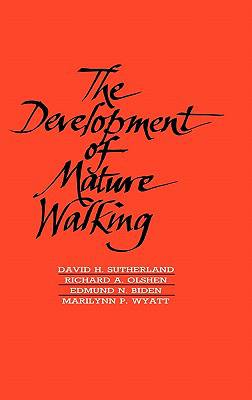
- Afhalen na 1 uur in een winkel met voorraad
- Gratis thuislevering in België vanaf € 30
- Ruim aanbod met 7 miljoen producten
- Afhalen na 1 uur in een winkel met voorraad
- Gratis thuislevering in België vanaf € 30
- Ruim aanbod met 7 miljoen producten
Zoeken
€ 76,95
+ 153 punten
Omschrijving
This important monograph summarizes a comprehensive study on the maturation of walking in normal children. Research, undertaken at one of the world's leading gait analysis centers, involved over 400 studies on a total of nearly 300 children in ten age-groups from one to seven years. Data are presented on anthropometric measurements; tests of developmental progress; time/distance parameters such as stride length and walking velocity; twelve joint angles on each side measured throughout the gait cycle; dynamic electromyography of phasic activity in seven lower-extremity muscle groups; and force measurements including vertical force, fore/aft shear, medial/lateral shear and torque. At each age, composite joint-angle graphs and time/distance parameters are brought together with film tracings of a representative child in that age group. In addition, advanced methods of statistical analysis have been applied to the joint-angle data to define prediction regions within which ninety-five percent of normal children should lie throughout the gait cycle. Finally, a "decision tree" is presented from which a fitted age can be inferred for a subject based on non-age-specific data gathered in a motion analysis lab. Practical applications are demonstrated in a chapter devoted to two case studies.
Specificaties
Betrokkenen
- Auteur(s):
- Uitgeverij:
Inhoud
- Aantal bladzijden:
- 277
- Taal:
- Engels
- Reeks:
- Reeksnummer:
- nr. 104
Eigenschappen
- Productcode (EAN):
- 9780521412216
- Verschijningsdatum:
- 31/05/1991
- Uitvoering:
- Hardcover
- Formaat:
- Genaaid
- Afmetingen:
- 156 mm x 234 mm
- Gewicht:
- 512 g

Alleen bij Standaard Boekhandel
+ 153 punten op je klantenkaart van Standaard Boekhandel
Beoordelingen
We publiceren alleen reviews die voldoen aan de voorwaarden voor reviews. Bekijk onze voorwaarden voor reviews.











